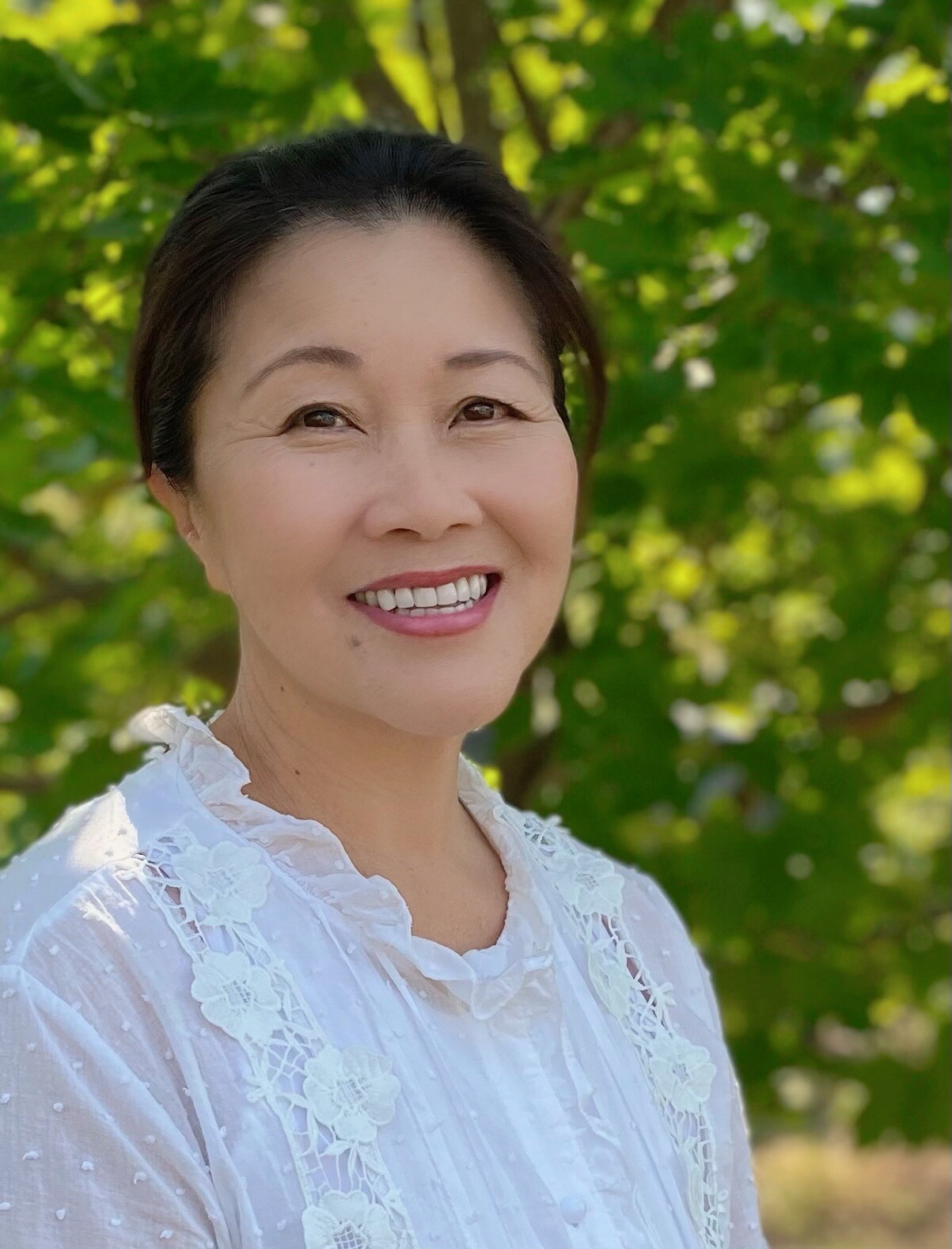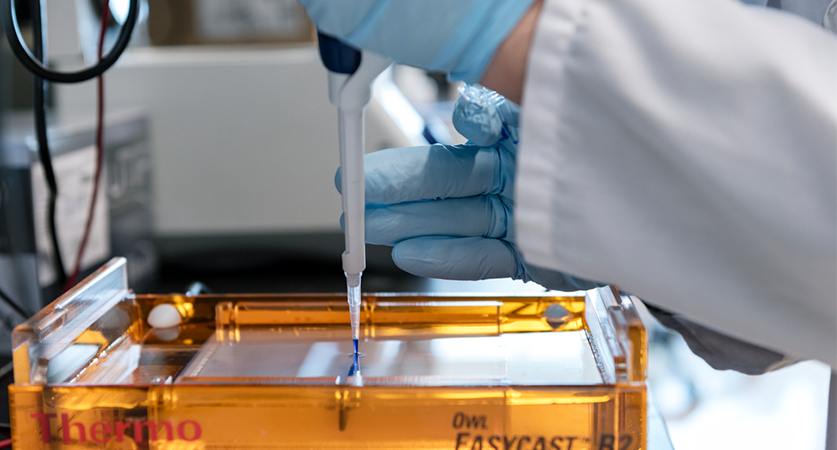Lakehead researcher involved in international collaboratory tackling new approach to curing HIV
Monday, August 30 – Thunder Bay, Ont.
 Dr. Pauline Sameshima, Lakehead University’s Canada Research Chair in Arts Integrated Studies, is part of an international team of researchers recently awarded a five year, $26.5-million (USD) grant from the National Institutes of Health (NIH) to try a new strategy for curing HIV.
Dr. Pauline Sameshima, Lakehead University’s Canada Research Chair in Arts Integrated Studies, is part of an international team of researchers recently awarded a five year, $26.5-million (USD) grant from the National Institutes of Health (NIH) to try a new strategy for curing HIV.
Known as the HIV Obstruction by Programmed Epigenetics (HOPE) Collaboratory, the multi-institution collaboratory will be led by researchers at Gladstone Institutes, Scripps Research Florida, and Weill Cornell Medicine. Their approach, which aims to both silence and permanently remove HIV from the body, takes advantage of knowledge about how other viruses have become naturally inactivated over time.
“This is a fundamentally different approach to targeting HIV than what everyone else has been trying,” said Dr. Melanie Ott, Director of the Gladstone Institute of Virology, and the program director and a principal investigator of the HOPE Collaboratory. “I think it’s extremely important for us to explore a broad range of scientific approaches to find the best cure for people living with HIV, as quickly as we can.”
A world-leading expert in education and curriculum development using the arts, Sameshima will be a co-investigator working alongside Dr. Patricia Defechereux, the community engagement coordinator at HOPE, to develop the Community Arts Integrated Research (CAIR) plan.
“It is so exciting to be part of this multi-disciplinary team of researchers that is taking this new approach to curing HIV,” said Sameshima. “My role on this team demonstrates the importance of educators on research teams and the necessity for collaborative interdisciplinary, diverse, and inclusive perspectives being valued in high-level research.”
Utilizing the award-winning Parallaxic Praxis research model, which invites multiple perspectives and recognizes different forms of learning through artful and creative ways, Sameshima and Defechereux will work with community members to create innovative CAIR approaches that will not only enable the development of an HIV cure curriculum that resonates at local levels in different countries, and among historically under-represented groups in HIV research and educational effort (women, Black, Indigenous, and transgender individuals and people who use substances), but also allow for the scientists and medical field to learn about the needs of the populations they serve. The end goal is for learning and understanding to travel in multiple ways.
The CAIR approach will see insights from communities disproportionately affected by HIV shared with scientists and others to develop new, culturally relevant community-generated curricula based on the HOPE scientific plan. The curricula will include stories, plays, documentaries, paintings, poetry, and other modes to stimulate conversation, provoke thinking, and provide feedback.
Ultimately, these creative works will provide knowledge to communities and scientists on how to communicate HIV cure research to the broader public in multiple forms people may understand. Cure research can be shared through events such as public art displays, exhibitions and community gatherings. Imaginative lay-language for HIV cure will aid community understanding, satisfaction, and acceptance of research and ultimately HIV cure(s).
“As we have seen with COVID-19 vaccine rollout, misinformation and unclear messaging are often the reasons why we see vaccine hesitancy,” explained Sameshima. “The arts are a unique and powerful vehicle for knowledge dissemination, one that will help to increase HIV cure literacy.”
Sameshima will play a lead role in creating the HIV cure education curriculum (in collaboration with Defechereux, the HOPE scientific team, community partners and community members) to be used in the arts activities. She will design study cohorts; host CAIR training for HOPE staff who will conduct research; and co-lead the focus group cohorts with participants in the United States and other international sites. She will also conduct data analyses (in collaboration with artists and students) and art-making collectives.
“The fact that arts integrated research is such a significant component of this ground-breaking research is extraordinary,” said Sameshima. “I am so grateful to Lakehead University for supporting my work in arts integration. I am honoured to be part of this high-calibre scientific team at the forefront of epigenetic research.”
“Congratulations to this international team on securing this significant research grant,” said Dr. Andrew P. Dean, Vice-President, Research and Innovation at Lakehead University. “More and more we are seeing that big questions in research require multiple interdisciplinary views to tackle those questions. This is an excellent example of how research in arts and education can add a whole new dimension to research in the health sciences area.”
More information about the HOPE Collaborative and the new approach to curing HIV can be found at https://gladstone.org/news/new-approach-curing-hiv.
-30-
Media: For further information or to arrange an interview, contact Jaclyn Bucik, Media, Communications & Marketing Associate, at 705-330-4010 ext. 2014 or mediarelations@lakeheadu.ca.
Lakehead University is a fully comprehensive university with approximately 9,700 full-time equivalent students and over 2,000 faculty and staff at two campuses in Orillia and Thunder Bay, Ontario. Lakehead has 10 faculties, including Business Administration, Education, Engineering, Graduate Studies, Health & Behavioural Sciences, Law, Natural Resources Management, the Northern Ontario School of Medicine, Science & Environmental Studies, and Social Sciences & Humanities. Lakehead University’s achievements have been recognized nationally and internationally, including being ranked, once again, among Canada’s Top 10 primarily undergraduate universities in Maclean’s 2021 University Rankings; as well as included in the top half of Times Higher Education's 2020 World Universities Rankings for the second consecutive year, and 99th among 1,115 universities from around the world in THE's 2021 Impact Rankings (which assesses institutions against the United Nations’ 17 Sustainable Development Goals). Visit www.lakeheadu.ca.
About the HOPE Collaboratory
The executive committee for the HOPE Collaboratory is led by Program Director Melanie Ott from Gladstone Institutes, and includes Principal Investigators Susana Valente from Scripps Research and Lishomwa Ndhlovu from Weill Cornell Medicine, as well as Co-Investigator Douglas Nixon from Weill Cornell Medicine. Operations will be overseen by Danielle Lyons from Gladstone, the collaboratory’s program manager.
The Hope Collaboratory also includes three co-directors for different research programs (Warner Greene and Nadia Roan from Gladstone, and Priti Kumar from Yale School of Medicine), a community engagement coordinator (Patricia Defechereux from Gladstone), 10 members (Cedric Feschotte from Cornell University, Joachim Hauber from Heinrich-Pette-Institut in Germany, Julie Ake and Denise Hsu from the US Military HIV Research Program, Esper Kallas from the University of Sao Paulo in Brazil, Niren Murthy from UC Berkeley, Eric Verdin from Buck Institute for Research on Aging, Betty Mwesigwa and Hannah Kibuuka from the Makerere University Walter Reed Project in Uganda, and Pauline Sameshima from Lakehead University), and four consultants (Jennifer Doudna from UC Berkeley, Gladstone, and the Innovative Genomics Institute; Peter Glazer from Yale School of Medicine; Avi Nath from the National Institute of Neurological Disorders and Stroke; and Mauricio Martins from Scripps Research).
In addition, the HOPE Collaboratory will work in partnership with the Last Gift Study led by Sara Gianella and Davey Smith at UC San Diego and the African Cohort Study (AFRICOS) led by Julie Ake at the US Military HIV Research Program, as well as with the San Francisco AIDS Foundation and industry partners Amgen, Constellation Pharmaceuticals, and Sangamo Therapeutics. The HOPE Collaboratory is supported by the National Institute of Allergy and Infectious Diseases of the National Institutes of Health under award number UM1AI164559.


